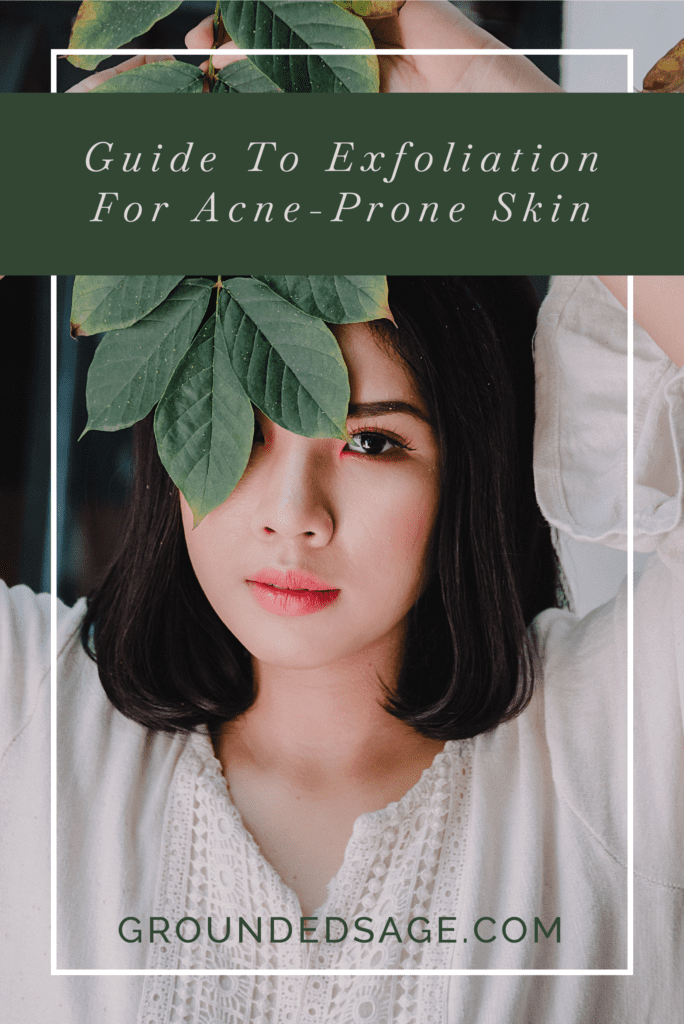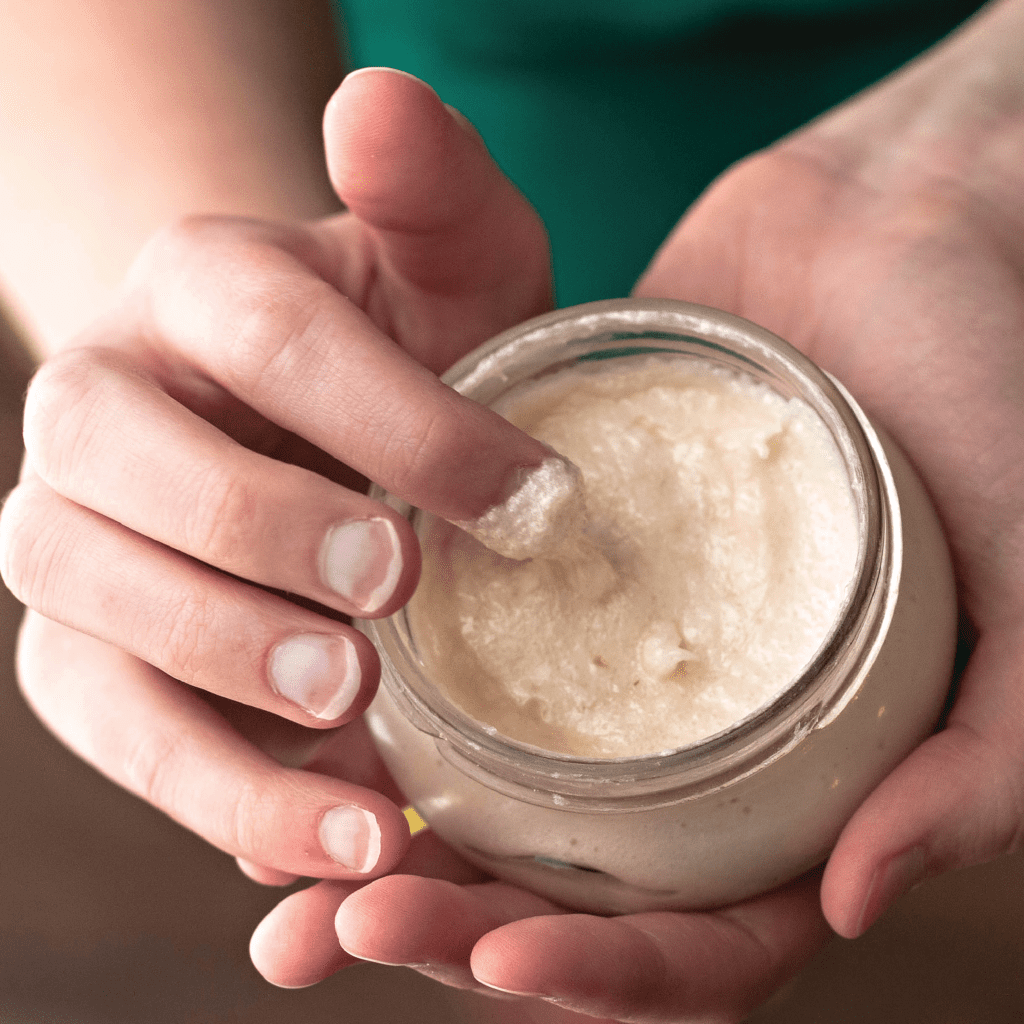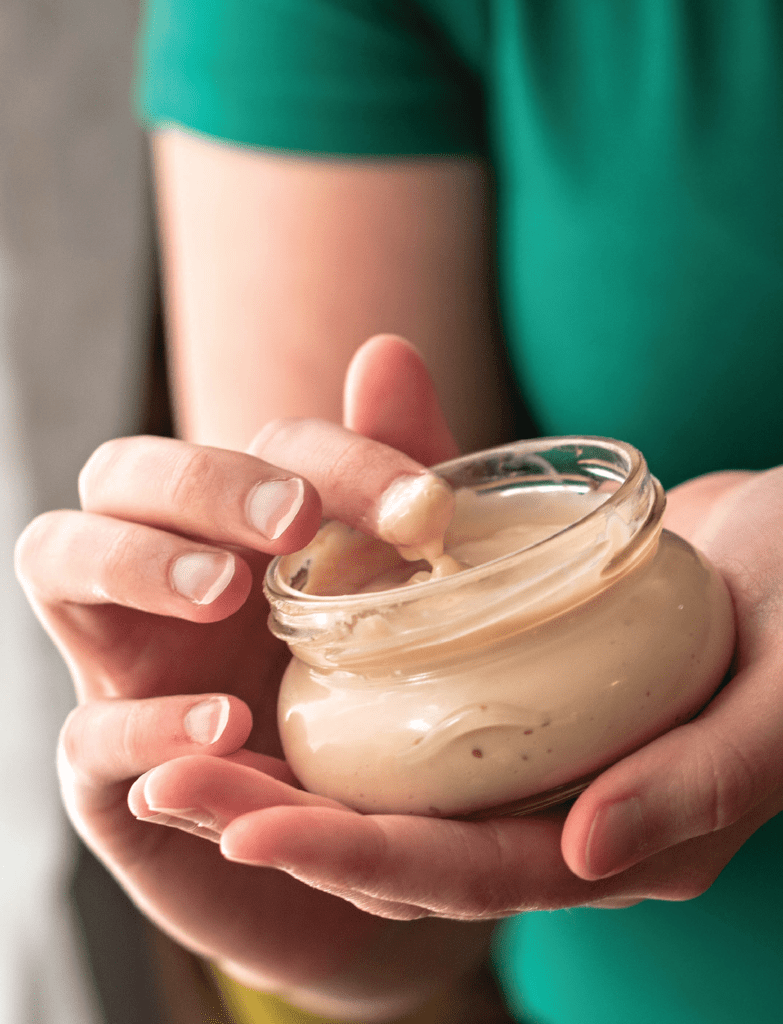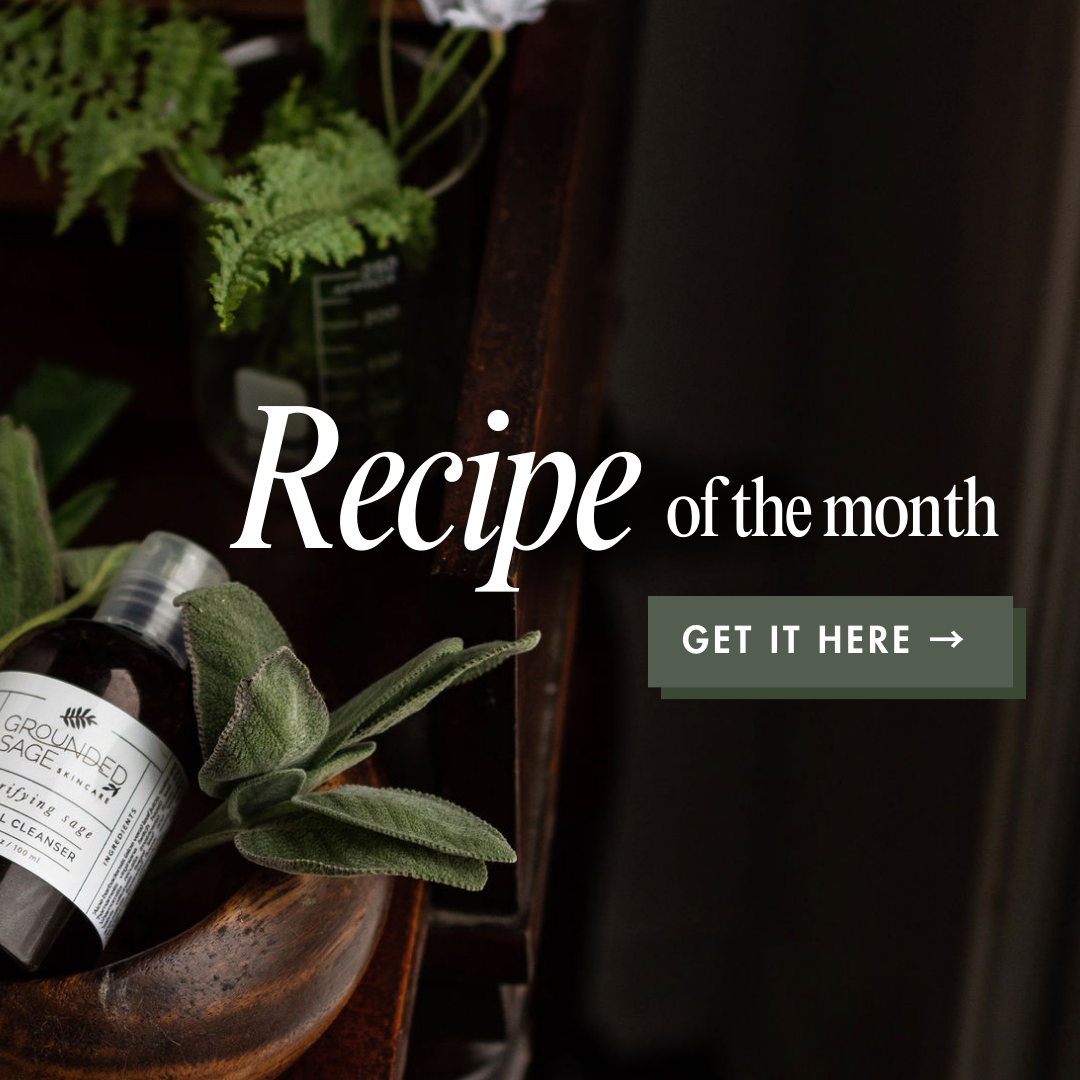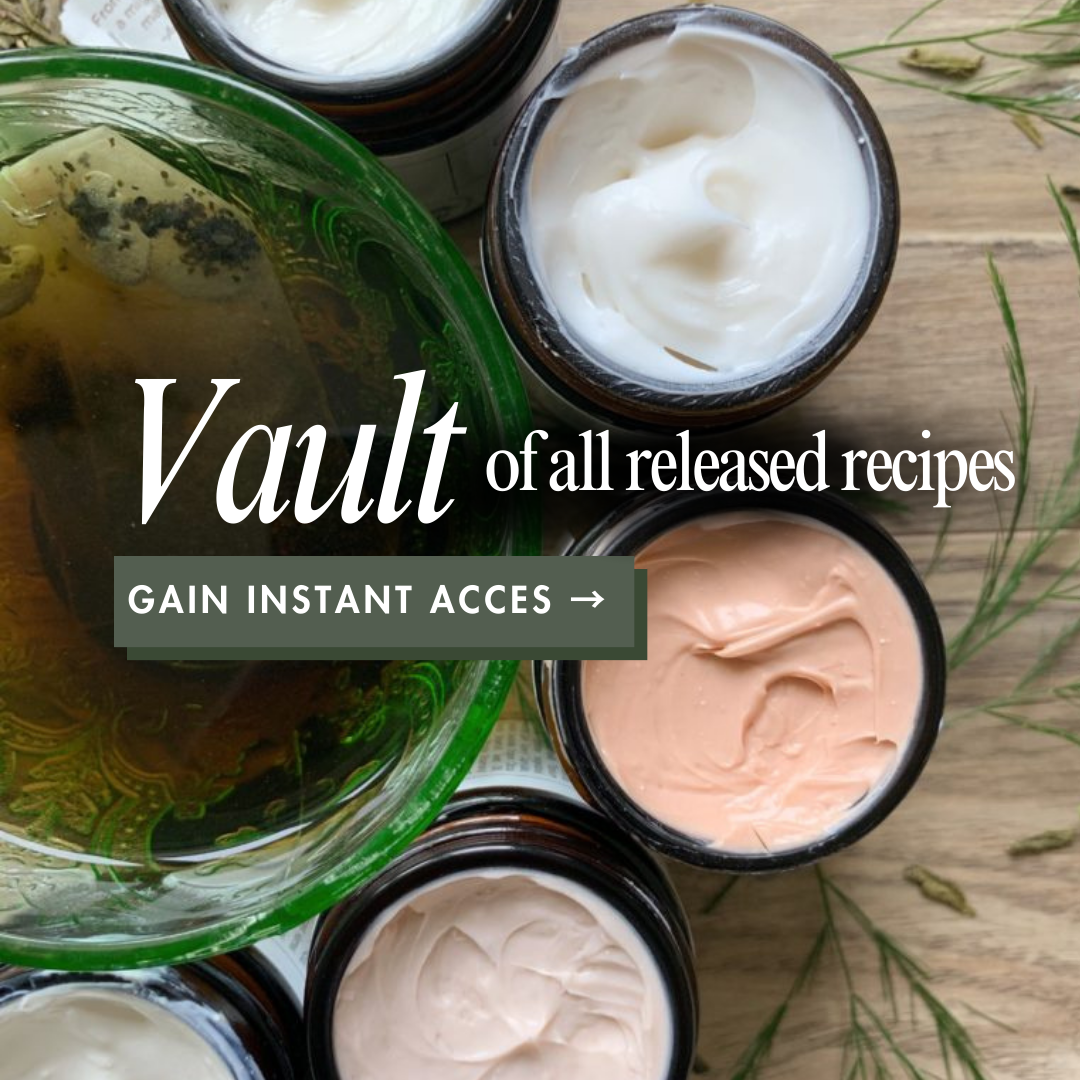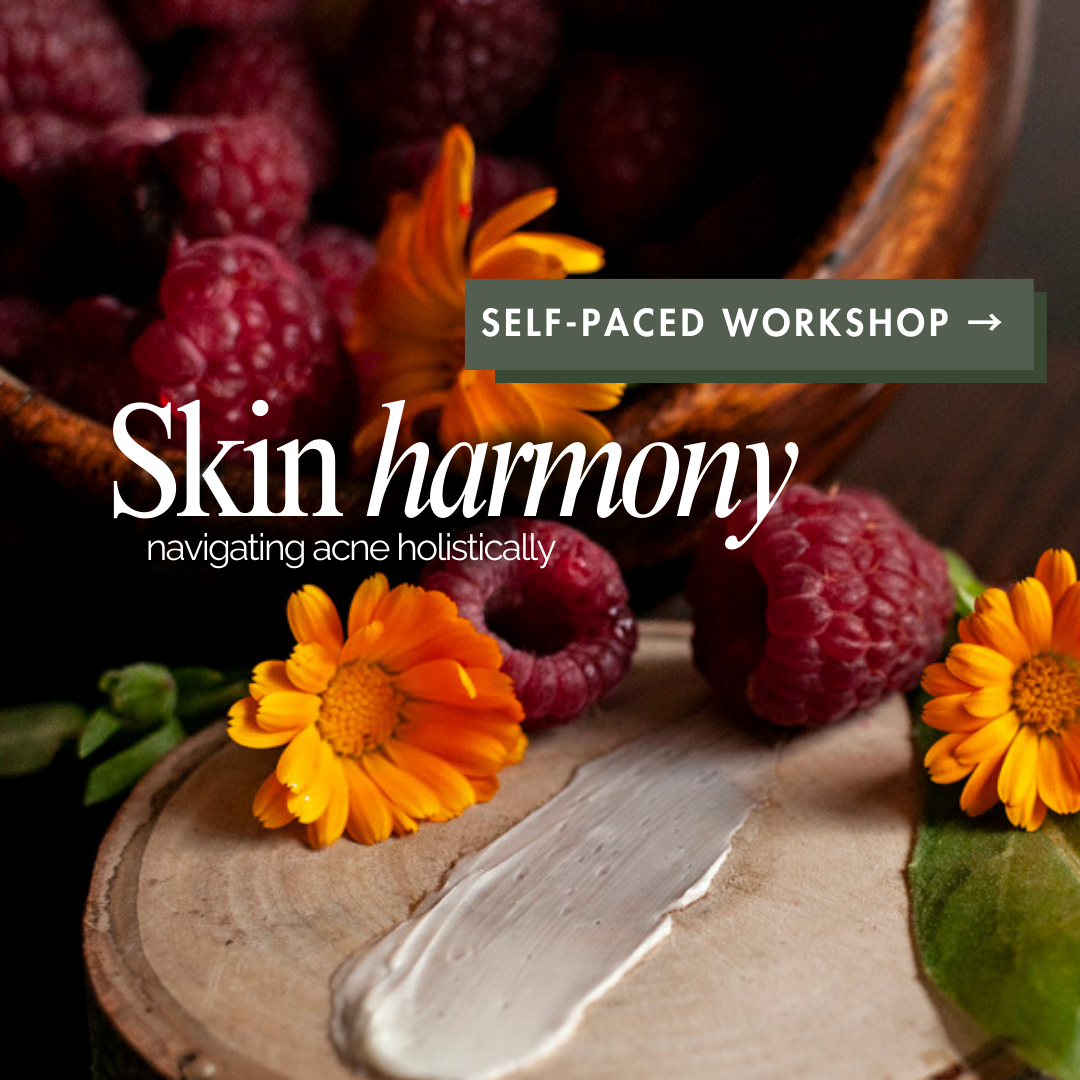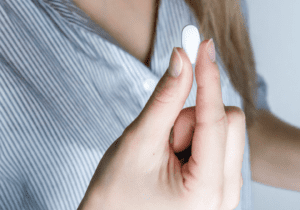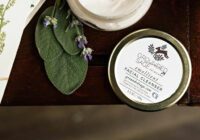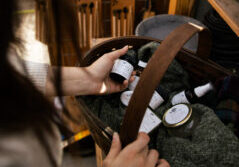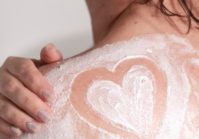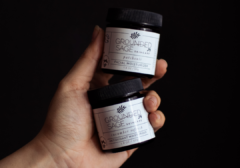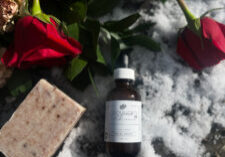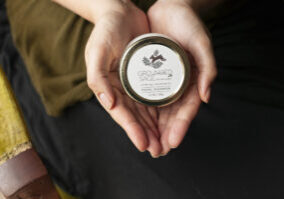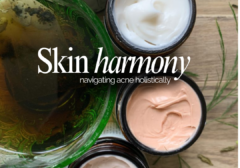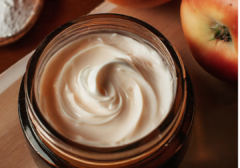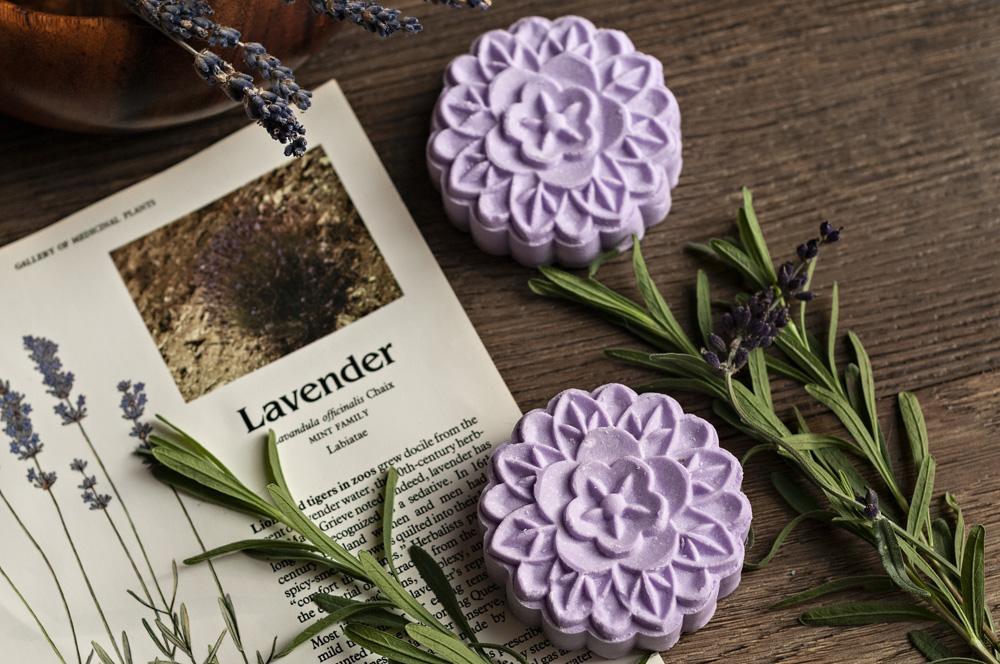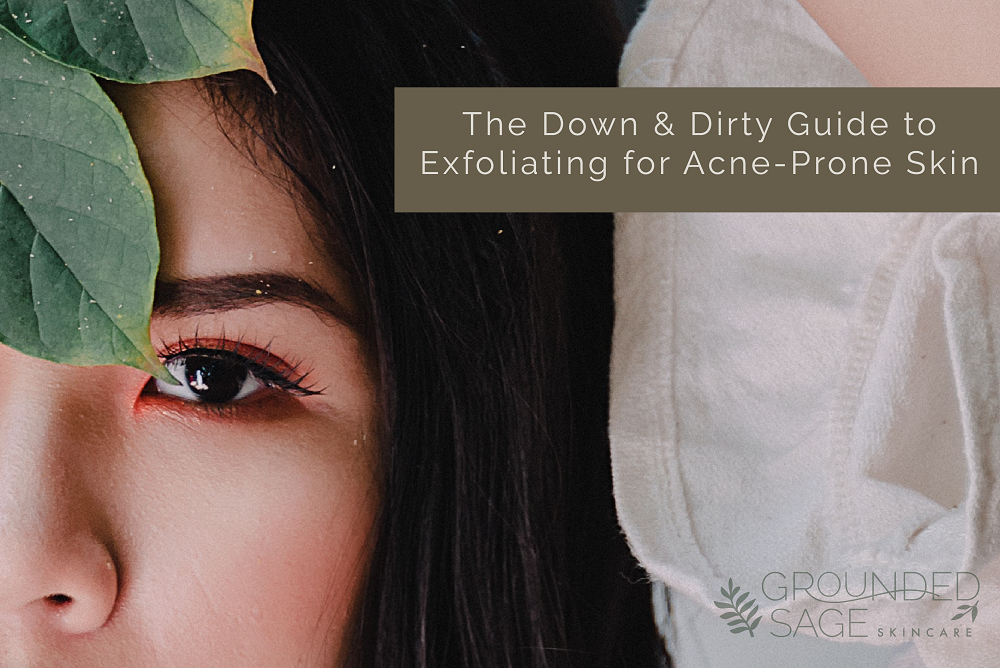
Welcome to my guide to exfoliating for acne prone skin!
If you missed the first two articles in this series, here are the links:
- How to pick the best cleanser for acne prone skin (in 3 steps) – a MUST read because we narrow down your external triggers of acne!
- Is oil cleansing right for acne prone skin? – everything you need to know about oil cleansing for acne prone skin
First up, I’m a firm believer that every routine needs an exfoliating element (whether that need is a daily need, or every other day need, or even a weekly need).
BUT this doesn’t mean I believe every routine needs the ABRASIVE type of exfoliating! In fact, in many cases, this should be avoided!
Read on to find out the type of exfoliation your skin requires to stay (or get) clear.

Why exactly do I believe that skincare routines need an exfoliating element to clear acne?
Let me count the ways in which exfoliating can boost our skin’s ability to be awesome!
1) Speeds up cell turnover
Here’s the deal, our skin is constantly shedding off old cells and making way for new cells. A build-up of old cells can have the skin looking dull, rough, and congested. While the rate of this shedding is about 21 – 28 days for a teenager, things slow down as we age. By the time we hit 50, the time it takes for this shedding to happen is twice as long. Giving our skin a helping hand with this shedding ensures that the old cells don’t start to cause problematic symptoms. These can include clogged pores, uneven texture, breakouts, blackheads, and over time, enlarged pores.
2) Allows your skin to retain moisture better
When dead skin cells and dried up oil (sebum) are removed, the skin is able to attract, absorb and hold on to moisture longer. This is important for balancing the oil and water content of your skin – a topic we talk more about here.
3) Frees your pores
We all value our freedom and our pores are no exception. Exfoliating, particularly enzyme exfoliation, not only decreases the chances of our pores getting clogged in the first place but can lift plugs, blockages, and debris from our pores. This is an especially important function when dealing with congestion, blackheads, and acne.
4) Lets the good in
When our pores are free, they are able to more readily absorb beneficial ingredients and pull those ingredients deeper into the skin. This will boost the effectiveness of your acne clearing efforts when you’re feeding your skin with loving, green ingredients (the type of ingredients it knows how to put to work healing, calming, and balancing). On the flip side, it’s important to note that when we’re using toxic or harsh ingredients, like those full of human carcinogens (petro-ingredients for example), they are being pulled deeper into our body – yikes!
When our pores are free they are also able to absorb more oxygen. As our skin is the largest organ in our body and needs oxygen to survive and thrive. And by thrive I mean using oxygen to fight off any bacteria or pathogens that are trying to get a foothold in our system.
Now that we know why we want to work exfoliation into our routine let’s figure out how to exfoliate. With that in mind, we’ll focus on a way that targets our specific triggers of acne.
How to target your acne triggers with exfoliation
If you read our previous post, 3 steps to the best cleanser for acne-prone skin, then you likely narrowed down the specific external triggers for your acne. If you missed it, head over here now to learn what upsets your skin the most!
Narrowing down our triggers is important because it helps us move ahead with as much info as possible. Each trigger will warrant a different approach. For example:
- A high production of oil needs an exfoliator that isn’t going to encourage your skin to produce even more oil. It needs an exfoliator that encourages balance and protection (when your skin feels protected, it doesn’t feel the need to “create” protection with more oil).
- Skin that has sticky cells needs an exfoliator that can actually break up the “glue” that holds them together– enzyme exfoliation, often achieved with pineapple extract, is the way to break down this glue. Actually, to be more specific, the pineapple enzymes literally digests the “glue” that holds sticky cells together! Pretty cool right?
- Dehydration requires a boost of, you guessed it, hydrating ingredients to bring the skin back into balance.
- Stripping requires an exfoliator that doesn’t continue to strip the skin – ideally, an exfoliator that provides some calming effects and is super gentle as stripped skin is usually highly sensitive and reactive.
- Bacteria running rampant requires an exfoliator that can balance out bacteria colonies – in other words, giving the good bacteria a chance to overtake the bad bacteria. This is a delicate balance and blasting your skin with the toughest antibacterial option out there is definitely not the way to go as this approach creates inflammation (which = acne! Not the results we’re going for – in fact, that’s exactly what we’re trying to avoid!).
As you can see, knowing your triggers and the current state of your skin is important in developing a routine that will actually support it and not fight it. Again, if you don’t know your triggers, find them here.
The next step in our guide is:
figuring out what method of exfoliation is best
so we need to ask:
How’s your skin feeling?
… and looking?
Based on what your triggers are and the current state of your skin, we’ll narrow down the right exfoliation method for you.
Find your skin below in the 4 most common acne-prone skin scenarios:
1) If your skin is…
- triggered by being stripped, being dehydrated, or by having “sticky cells”
- sore
- experiencing painful breakouts
- irritated
- inflamed
- broken out all over (not just a zit here and there, but we’re talking full face acne)
- chronically broken out – there are no “flare-ups” or “episodes”, your skin is always broken out with no breaks of clear skin
- showing signs of redness/irritation before you even splash water on it
- has recently undergone an invasive or even slightly invasive/irritating spa treatment
Then we want to avoid: any type of “mechanical” exfoliation. In other words, the type of exfoliation that requires scrubbing or rubbing. Your skin is in a state that needs some serious TLC, nourishment and the gentlest of approaches. Healing and calming is the goal for your skin!
A great option for you would be a hydrating, soothing, aloe-packed gel cleanser with ingredients that provide enzyme exfoliating action. Enzyme exfoliation deep cleans pores while being super gentle and non-abrasive. You’ll also want a formula that doesn’t have high levels of fruit enzymes. Too much of a good thing can be irritating! Your best bet? Our Pure Amore Gel Cleanser.
2) If your skin is…
- triggered by sticky cells
- congested (or prone to congestion)
- prone to dehydration
- suffering from occasional breakouts, currently mildly broken out, or experiences “monthly”/cyclical/hormonal flare-ups of acne (these may range anywhere from mild to moderate).
- Your skin could also be to the point where it’s now ready to heal from post acne symptoms like hyperpigmentation, mild sensitivity, and/or easily clogged pores.
Like the first type of skin we discussed, your skin would use an aloe-based enzyme-powered gel cleanser but your skin is also at the point where it can safely use a gentle, and I mean SUPER gentle, scrubby (aka mechanical) cleanser for exfoliating. A great place to start would be a cleanser that combines the best of both worlds: enzyme exfoliation for deep cleaning. I will also digest the glue that holds sticky cells together) and slough off surface level cells. A cleanser that combines both (and is my go-to) is our Pineapple Facial Scrub.
3) If your skin…
- oily (either full face or t-zone oiliness)
- mildly broken out or prone to mild breakouts
- congested (or prone to congestion)
- suffering from occasional breakouts, currently mildly broken out, or experiences “monthly”/cyclical/hormonal flare-ups of acne
Your skin needs a soap-based, enzyme-powered cleanser that removes excess oil while keeping your lipid barrier intact (remember, that’s important for making sure your skin doesn’t respond by up-regulating the production of oil). A cleanser that deep cleans your pores, and is a foundational component of an oil balancing routine would be our Green Tea and Pineapple Liquid Facial Cleanser.
You’d also be safe to work a mildly scrubby cleanser into your routine a few times a week like our Pineapple Facial Scrub or Mild Jojoba Facial Scrub.
3) If your skin is…
- triggered by rampant bacteria
- is oily – either your whole face is always oily, or you wake up in the morning with your skin feeling extra oily (and you didn’t do any oil treatments the night before), or even when you don’t wear makeup, your skin gets oily, part way through the day.
- could be considered “thick”
- can be prone to having a rough texture even if you exfoliate the day before
- prone to (or has) enlarged pores
- can get a flaky appearance – whether that’s super noticeable or shows up when you try to put your makeup on. Places this happens aren’t at all irritated and this flaking of skin can show up even if you exfoliate the day before (this is a sign that your skin isn’t staying hydrated or isn’t being hydrated at all. Work a hydrating component into your routine, don’t skip moisturizing, consider using a plant-based serum, be consistent with your hydrating + moisturizing + exfoliating efforts, and (the key that’s often missed) be patient. Re-hydrating doesn’t happen overnight, and in some cases – like mine – takes months).
Your skin needs a scrubby, bacterial fighting cleanser is your best bet for exfoliation! Your skin can handle some gentle, strategically planned friction and will benefit from giving the “good” bacteria the upper hand. A great choice for this (and one of our most popular exfoliators) would be our Tea Tree Facial Nut Scrub.
So we’ve covered what, where, and how. Let’s talk about when!
Typically, when using the right exfoliating method for your current skin situation, daily exfoliation is A-OK! And in fact, is often what I recommend!
Of course, there’s an exception to every rule (as we’ve heard, it’s the exceptions that prove the rule). Your skin may do better with exfoliating a few times a week rather than daily.
If your skin is in a super reactive, sore, irritated or sensitive state, start off slow with a couple times a week. Build up by adding one more exfoliating session a week until you find the perfect frequency for your skin.
If you start to notice more breakouts when exfoliating less often, and your skin isn’t irritated by exfoliating more, definitely dial up the frequency of your exfoliating efforts.
For skin like mine – which is prone to dehydration, acne prone, and can experience “sticky cells” at certain times of the month – it responds best when I gently exfoliate my skin daily. If I skip a day or two my skin isn’t shy about communicating to me that it’s not happy!
 Now I often get asked if exfoliation should happen in the AM or PM.
Now I often get asked if exfoliation should happen in the AM or PM.
My first response is “whenever you can fit it in”! But, if you want to get specific, our skin benefits from exfoliation in the AM and PM for different reasons.
In the AM, an enzyme-based exfoliator is particularly useful at breaking down anything our pores purged during the night (the skin’s preferred purging time!). If you’re working through a skin detox, consider cleansing with an enzyme-powdered cleanser like our Pure Amore Gel Cleanser or Green Tea and Pineapple Liquid Facial Cleanser.
In the PM, our skin benefits from us sloughing off dead skin cells, removing any dirt and oil that’s built up over the day, as well as any impurities, pollution, or makeup we put on in the morning. This is when you’ll want to break out your scrubbier cleansing exfoliators like our Pineapple Facial Scrub or Tea Tree Facial Nut Scrub.
“Ok, so what about using two different exfoliators on the same day?”
If you want to get mega exfoliating into your life by using different exfoliators, one in the AM and one in the PM, you have my blessing – with a little rule to follow: One cleanser/exfoliator should be non-abrasive (non-scrubby / non-mechanical), especially if one of the exfoliators you’re using is our Tea Tree Facial Nut Scrub. Use your enzyme based exfoliator in the AM and your scrubby (mechanical) exfoliator in the PM.
Using two enzyme-powdered exfoliators on the same day is totally fine as long as they are formulated to be gentle! It’s important to note that not all enzyme based exfoliators are. Some have such a high concentration of fruit acids (aka fruit extracts/fruit enzymes). The “glue digesting” enzymes literally “eat too much” and cause damage to your oil barrier, spark irritation, redness, or inflammation. When picking an enzyme cleanser, make sure you trust the person or company who’s formulated it to include just the right balance of enzymes so they are effective without being harsh.
Other times to use exfoliators include:
- following a particularly sweaty workout session (especially if you’re prone to bacteria running rampant)
- after using a clay or charcoal-based facial mask (you’ll want to remove any impurities or debris that the clay or charcoal has pulled to the surface)
- after wearing a clay-powered, detoxifying facial moisturizer like our Daily Detox Facial Moisturizer
- during a skin detox where your goal is to purge your skin of a build-up of petro-based ingredients
While on the subject of frequency, let’s talk about how long to exfoliate for during each session.
Exfoliating shouldn’t take you long! With that being said, don’t attempt to “power sand” your skin like you would an old painted door you’re looking to strip the paint off of! Gently (notice I keep stressing and repeating the word gently?) swirl the exfoliator around your skin in sweeping or circular motions. If you’re using a non-abrasive, gel-based, enzyme exfoliator like our Pure Amore Gel Cleanser, let it sit for up to a minute, then wash off.
So there you have it!
We’re now 3 steps into our foundational skincare series – we’re on a roll!
Did you miss the first two posts? Here are the links to catch up:
- Picking a cleanser for acne-prone skin in 3 steps
- What you need to know about oil cleansing for acne prone skin
Stay tuned for the next instalment in our series when I cover why hydration is left out of most acne busting plans and how its absence in routines is contributing to breakouts! Yikes!
With love and radiance,

Pin this article for later:
